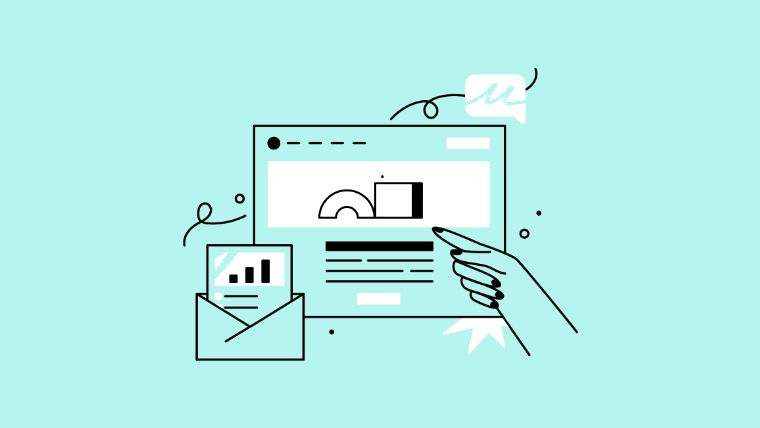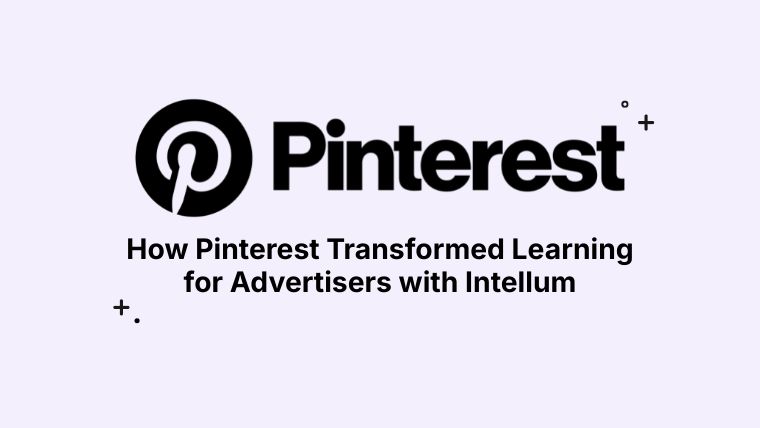Picture a new product launch. Your business spent months researching options and has finally developed a candidate your team is jazzed about. Finance has set its projections, marketing is planning a big release campaign, and your client success team is ready to work the phones.
Then, the product launches—and all the momentum stalls. Prospects aren’t converting, and most clients aren’t interested in hopping on a call. Even when you do make a sale, your support team is bombarded with a series of questions. Customers simply aren’t seeing the value.
What happened? Your product tested well internally, so why the disconnect? Chances are, it’s not that you had a bad product, or that clients don’t have a use for it. If anything, your clients may not even realize they have a need.
But that can change—with the right customer learning program. In this article, we’ll explain exactly what customer learning is and why it’s so important. We’ll also explore ways to use client learning to improve product awareness, advocacy, and adoption.
What Is Customer Learning?
Customer learning is the process of equipping clients with the knowledge and skills they need to successfully navigate your offerings. Often part of a broader customer education program, customer learning tends to vary in medium, ranging from workshops and virtual events to online courses and certifications.
Customer learning also varies in its subject matter. Some education, like welcome guides and product walkthrough videos, is designed to help clients acclimate to a new offering and accelerate adoption. Other forms of learning, like a help forum or an FAQ article, are meant to troubleshoot issues and alleviate client friction.
The Importance of Customer Learning
Customer learning is the unsung hero of product adoption. By helping clients enrich their knowledge of your products, you empower them to navigate those offerings with confidence. That isn’t speculation; a wealth of customer education statistics show that education can mean the difference between a renewal won and a renewal lost.
In the intro example, that new product launch fizzled not because it was bad or because there was a lack of demand. There simply wasn’t enough understanding of that new product for your clients to adopt it. That isn’t something that can be fixed with a short-term marketing or sales push—it requires a long-term investment in the customer experience.
Effective learning is the way you nurture that experience. By providing education in the right places and at the right intervals, you can improve the client experience and turn frustration into satisfaction. Whether a client is looking to explore a new feature or navigate a pesky software bug, customer learning helps them achieve their goal.
Customer Learning vs. Employee Learning
To create effective customer learning, it’s helpful to know how it differs from other types of education within your organization.
Employee learning is the act of upskilling internal talent so they can better serve your clients, channel partners, and fellow employees. Though traditionally associated with HR, employee education has become increasingly popular under other stewards, such as learning and development (“L&D”). These teams enable employees with various types of employee training, such as:
- Personal development (e.g., soft skills training, analyzing skill gaps)
- Professional development (e.g., leadership development, manager training)
- Long-term career development (e.g., mentoring or coaching, emotional intelligence)
Customer learning is grounded in the same philosophy, but the actual types of content may differ to fit your client base. Where employee training and development programs tend to be skills- or service-minded (e.g., sales training, customer service training), customer learning tends to focus on end value. Examples include product walkthroughs, release notes, and certifications.
Why not both? The most effective education programs don’t pick a lane—they do it all. According to our 2022 Transforming Organizational Education Initiatives Report, businesses that use an education platform designed for multiple audiences are twice as likely to report improved customer and employee retention.
How to Make Effective Customer Learning
Looking to start or expand your customer education arm, but not sure where to begin? Here are four steps to help you optimize your efforts.
1. Align on your education needs.
Before jumping into the content itself, it’s important to understand your client strategy. What are your organization’s current goals? Are you looking to acquire new client logos? Retain and expand existing accounts? Knowing your client strategy is critical to crafting a customer education strategy that fits those needs.
Tip: Check out our guide to customer education metrics for help aligning on the KPIs that matter most to you and your business.
2. Assemble a dedicated team.
In the past, client learning might have been the responsibility of customer success (CS). The rationale makes sense: CS reps are familiar with clients and their needs, so shouldn’t they also be the ones to design education? But times are changing. To outpace your competitors, you need education that goes beyond one-pagers and whitepapers. You need a dedicated team.
Research supports that claim. In our 2023 State of Education Initiative Ownership Report, which surveyed 445 education leaders, we found that only 8% of organizations drive client education through their CS team. The top owner of customer learning, by a wide margin, was a dedicated education team (47%).
If your business hasn’t made that investment yet, now’s the time.
3. Map out client learner needs.
Once you know where you’re going and have a team to get you there, take time to understand the voice of your customer. What are their needs? How does your product or service help them achieve their goals? What pain points do they experience, and how can education alleviate that pain?
If you have clients on speed dial, book time to discuss these questions. (If you don’t, ask your CS, UX research, or marketing team to set up interviews.) Once you’ve uncovered your clients’ biggest blockers, use the findings to craft learner personas that can help you prioritize different education goals and learning styles.
4. Design personalized content.
Empowering your clients isn’t a one-size-fits-all approach. To get the most out of your program, you’ll want to create content that meets your clients where they are.
Thankfully, customer education content takes many forms: Videos, help center articles, a discussion forum, and even the occasional training session can all be effective ways to provide targeted education. Of course, for your program to be sustainable, you must deliver that content consistently, and at scale. And that starts with the right education platform.
Create Scalable Learning With Intellum
Intellum’s education platform lets you design and deliver learning content for any audience. Educate clients, train employees, and enable channel partners—all in one place. Use our in-line authoring tools to design everything from onboarding courses to effective employee training, and track results with our data dashboard to prove ROI.
Learn more about how Intellum is reshaping workplace education.



.png)

